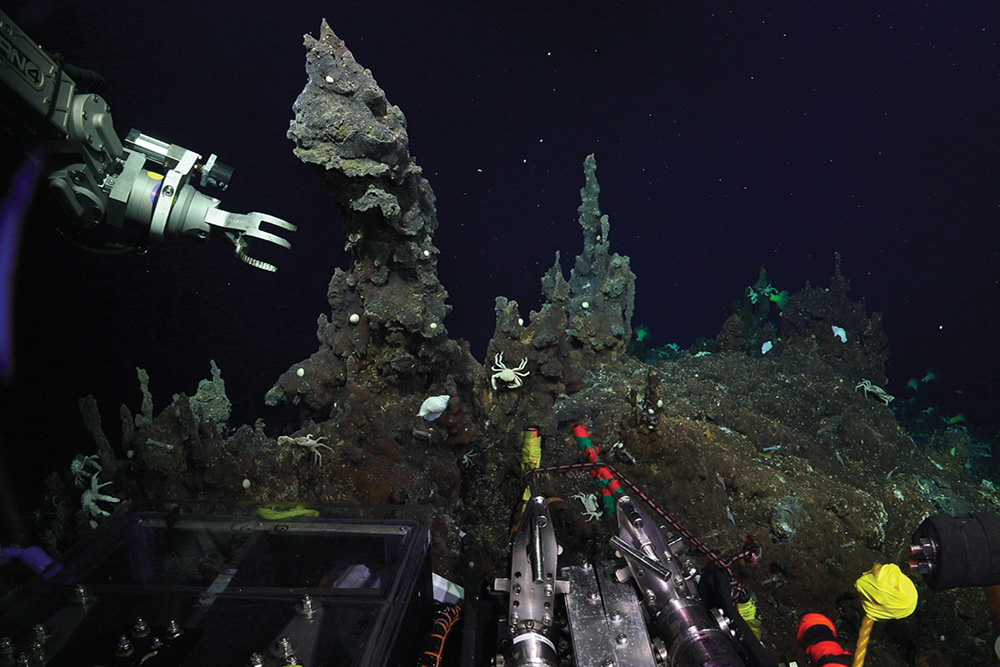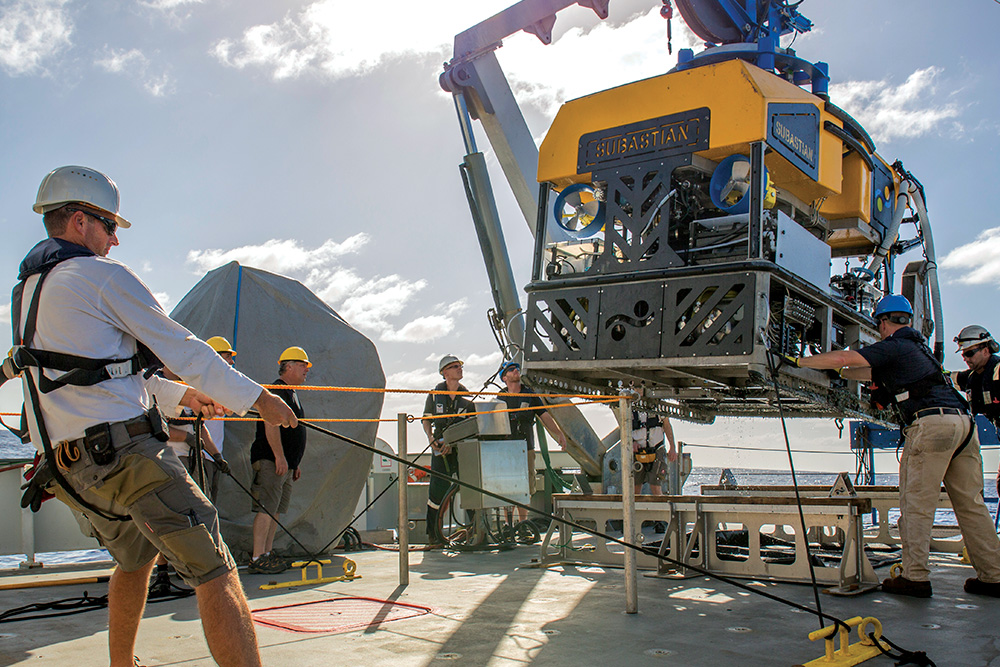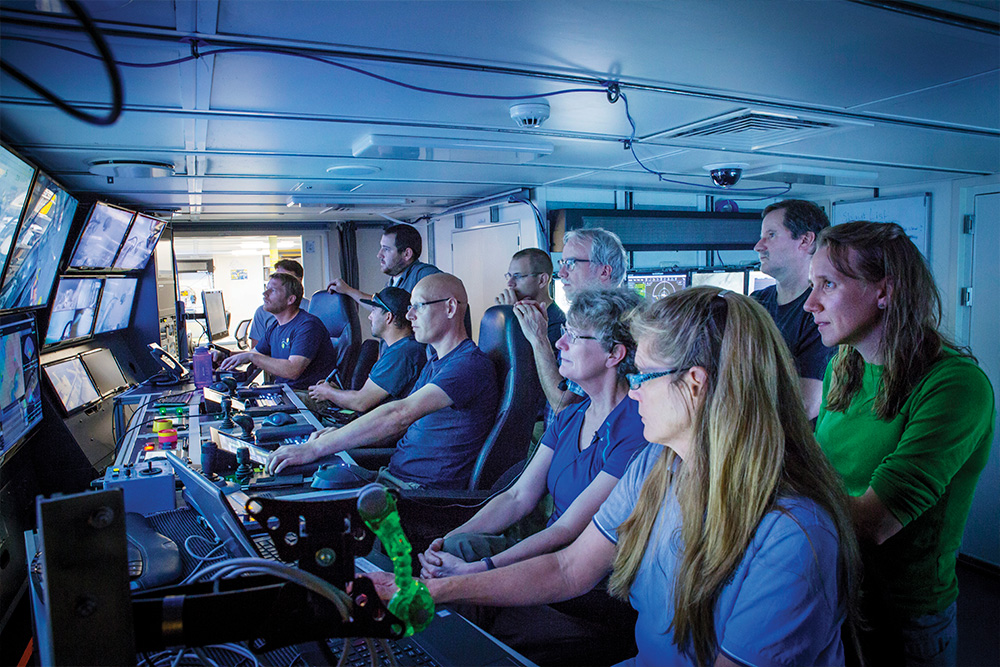The first-ever science cruise with Schmidt Ocean Institute’s in-house designed and built ROV SuBastian took place in the Mariana Back-arc. A multidisciplinary team of geologists, chemists, and biologists departed Guam to begin surveying the largely unexplored Mariana Back-arc region in and around the Marianas Trench Marine National Monument for life at depths greater than 4,000 meters.
In 2015, the first “Hydrothermal Hunt” research cruise aboard Falkor located new hydrothermal vents in the region, including evidence of recent lava flows. Chief Scientist Dr. David Butterfield, Joint Institute for the Study of the Atmospheric and the Ocean (JISAO), University of Washington, led the science team in completing the second phase of this two-part exploration of the region: returning to these vents to characterize the water chemistry and biodiversity, thereby filling a gap in knowledge about the biogeography of these unique deep-sea ecosystems.
The new vent sites featured spectacular chimneys made of sulfide minerals up to 30 meters tall with vent fluid pouring forth at temperatures up to 365°C. Hairy snails, shrimp, crabs, mussels, limpets, squat lobsters, anemones, and polychaete worms were also viewed and sampled. The scientists onboard Falkor hypothesized that some of the observed animals at these sites are new species, but are awaiting verification as the team continues their analysis shoreside. The results provide a foundation to advance research on how life thrives around these extreme deep-sea hydrothermal vents.
[This expedition] Might help us to learn what might be the traits that are going to be in species that persist in a global ocean that is going to be changing markedly.
— Dr. Amanda Bates, National Oceanography Centre, University of Southampton

The observations from this expedition demonstrate that the recently discovered vent sites have an ecosystem that is solely characteristic of the Mariana Back-arc. Video captured during dives with ROV SuBastian enabled the team of researchers aboard Falkor to make observations that suggest the Back-arc vent sites are relatively long-lived and that each site has biological “connectivity” with the others despite the long distances. Each vent site is relatively small and isolated, with many sites separated from others by up to 161 kilometers. The study also confirmed that the Back-arc ecosystems are distinct and different from the nearby Volcanic Arc hydrothermal ecosystems, supporting the idea that geological and chemical environment play a key role in selecting animal community composition at hydrothermal vents.
This year’s results combined with the surveying completed last year with Falkor’s CTD and Woods Hole Oceanographic Institute’s AUV Sentry, supported by Schmidt Ocean Institute, will be used to create the first comprehensive view of the geologic, chemical, and biologic diversity that exists along the Mariana Back-arc.





